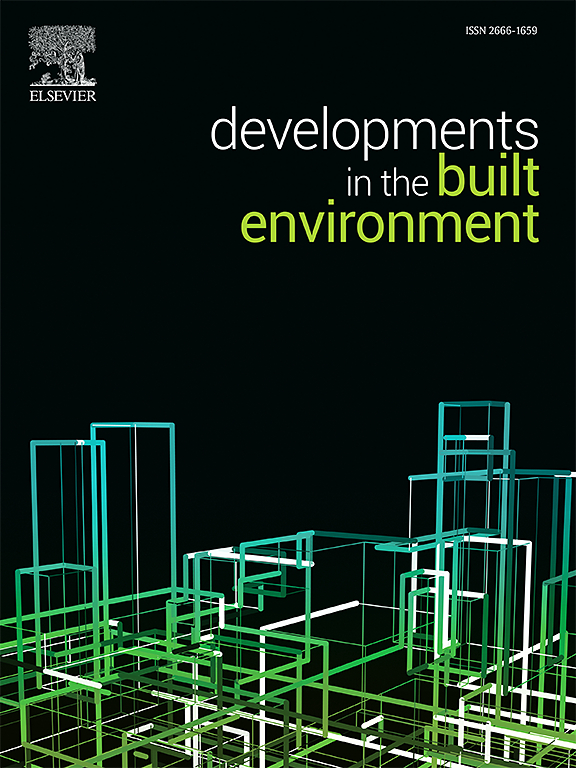在高强度混凝土中回收电子废物作为纤维增强:一种可持续的方法
IF 8.2
2区 工程技术
Q1 CONSTRUCTION & BUILDING TECHNOLOGY
引用次数: 0
摘要
电子工业的废物,被称为电子废物纤维(EWF),为可持续混凝土加固提供了机会。本研究调查了EWF的使用,主要由黄铜纤维组成,作为一种天然材料,用于增强高强混凝土(HSC)的性能,解决其固有的脆性,这往往导致在极限承载能力下突然破坏。EWF的有效性在两种情况下进行了评估:(1)含有不同EWF比例(按体积计为0%、0.5%、1.0%、1.5%、2.0%和3.0%)的HSC混合物,以及(2)用钢纤维(SF)代替EWF的混合物。进行了一系列新鲜、硬化和形态性能测试。当添加量为1.5% SF时,其抗压强度最高,达到54.77 MPa;当添加量为3.0%时,其抗拉强度最高,但抗压强度降低了40.74 MPa。在1.5% SF时,抗弯强度达到6.98 MPa,随着剂量的增加而降低。SF混合料的劈裂抗拉强度显著提高,当SF含量为1.5%时,劈裂抗拉强度提高20.92%,而EWF混合料则有适度的提高。与对照混合物相比,在1.5 SF和1.0% EWF下,弹性模量分别提高了14.72%和12.25%。在1.0% EWF和1.5% SF时达到最佳性能,超过此值,由于孔隙度增加和结构连续性降低,机械性能下降。这些发现表明EWF作为HSC可持续增强材料的潜力,有助于提高耐久性和资源节约。本文章由计算机程序翻译,如有差异,请以英文原文为准。
Recycling electronic waste as fiber reinforcement in high-strength concrete: A sustainable approach
The electronic industry's waste products, known as electrical waste fibers (EWF), present an opportunity for sustainable concrete reinforcement. This study investigates the use of EWF, primarily composed of brass fibers, as a natural material for enhancing the properties of high-strength concrete (HSC), addressing its inherent brittleness that often leads to sudden failure at ultimate load capacity. The effectiveness of EWF was evaluated under two scenarios: (1) HSC mixtures containing varying EWF ratios (0 %, 0.5 %, 1.0 %, 1.5 %, 2.0 %, and 3.0 % by volume), and (2) mixtures where steel fibers (SF) replaced EWF. A series of fresh, hardened, and morphological property tests were performed. The highest compressive strength of 54.77 MPa was achieved at 1.5 % SF, while the maximum tensile strength using EWF was observed at 3.0 % content, though with a reduced compressive strength of 40.74 MPa. Flexural strength reached 6.98 MPa at 1.5 % SF and decreased with higher dosages. Splitting tensile strength improved significantly in SF mixes, with up to a 20.92 % increase at 1.5 % SF content, whereas EWF mixes showed moderate gains. The modulus of elasticity improved by 14.72 % at 1.5 % SF and 12.25 % at 1.0 % EWF compared to the control mix. Optimal performance was achieved at 1.0 % EWF and 1.5 % SF, beyond which mechanical properties declined due to increased porosity and reduced structural continuity. These findings demonstrate the potential of EWF as a sustainable reinforcement material for HSC, contributing to enhanced durability and resource conservation.
求助全文
通过发布文献求助,成功后即可免费获取论文全文。
去求助
来源期刊

Developments in the Built Environment
Multiple-
CiteScore
7.40
自引率
1.20%
发文量
31
审稿时长
22 days
期刊介绍:
Developments in the Built Environment (DIBE) is a recently established peer-reviewed gold open access journal, ensuring that all accepted articles are permanently and freely accessible. Focused on civil engineering and the built environment, DIBE publishes original papers and short communications. Encompassing topics such as construction materials and building sustainability, the journal adopts a holistic approach with the aim of benefiting the community.
 求助内容:
求助内容: 应助结果提醒方式:
应助结果提醒方式:


